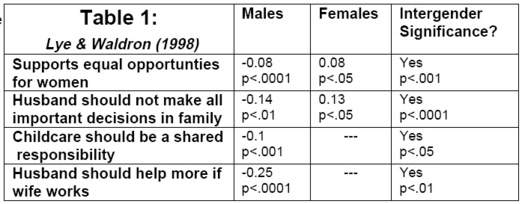As frequent sit-com allusions support, the dorm-room poster of dogs playing poker has become a pop culture totem of American masculinity unbridled by common notions of taste. The poster depicts dogs sitting around a poker table surrounded by pipes, liquor, and, in one version, a poodle cocktail waitress. Pop culture, it seems, associates poker playing with traditional maleness. No similar image exists of female canines. To what extent is gambling linked to or embedded in traditional gender role ideology? Little research has been conducted in this area. However, by looking at parallel investigations in the study of alcohol, perhaps some idea of gambling’s relationship to gender roles can be attained.
The standard Gender Roles Hypothesis posits that since intoxication and its associated impairments are incompatable with the traditional feminine responsibilities of childrearing and housekeeping, women would drink less than men. Heavy consumption among men, however, may be explained by the relatively higher Lye & Waldron (1998)levels of social acceptance and encouragement of drinking. To test this hypothesis, Lye and for women Waldron (1998) and Huselid Cooper (1992) regressed level of important decisions in family alcohol consumption among adolescents against various responsibility indicators or sex role ideology.
The results of the former study, table 1, reveal that males who posess less traditional views of the role of women are less likely to drink heavily. Although an opposite effect was observed among females, the relationships were fewer and weaker. Among a combined sample of males and females, Huselid and Cooper found significant positive relationships (standardized betas) between holding traditional gender beliefs and consumption (Table 2). Summarizing the findings of the two studies, it is apparent that alcohol use and abuse is linked in some way to the embracement of traditional American gender roles. 
As mentioned above, the gender-based function of alcohol in American culture may provide an explanation for this phenomenon. Might this relationship hold true for gambling as well? That is, does the belief in the masculine ideal of the poker playing dogs lead to more gambling? Further research, of course, is required. But in the meantime, a careful consideration of the engendered, culture-bound role of gambling is in order. Much gambling research heretofore has examined attitudes and prevalence within the discrete political units of nations, states, and municipalities. If, as the present studies suggest, ideology and beliefs are linked to use and abuse, then perhaps future work should consider using the more amorphous category of culture as a unit of analysis.
Sources: Lye, D.N. & Waldron, I. (1998). Relationships of substance use to attitudes toward gender roles, family, and cohabitation. Journal of Substance Abuse, 10, 185-198. Huselid, R.F. & Cooper, M.L. (1992). Gender roles as mediators of sex differences in adolescent alcohol use and abuse. Journal of Health and Social Behavior. 33, 348-362.
This public education project is funded, in part, by The Andrews Foundation and the National Center for Responsible Gaming.




